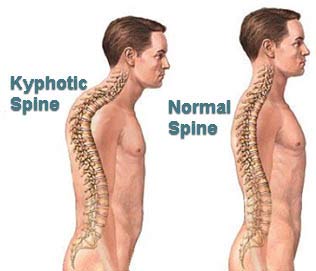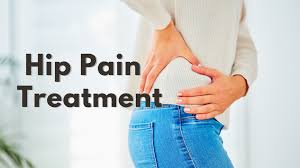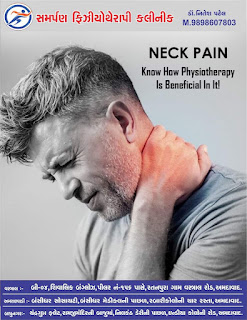 |
| Abnormal Posture And Physiotherapy |
Below you will find 7 physical therapy exercises to help you deal with posture and pain at work at home. These physical therapy exercises are designed to correct bad posture to make your work less painful and more productive. The following exercises aim to increase muscle strength and flexibility to improve posture. Stretching your muscles helps develop strength, flexibility, and balance, leading to less muscle pain and better posture.
Exercises to strengthen the core and gluteal muscles, as well as back extension, will help correct sagging posture. Core and glute strengthening exercises, hip flexors and hip stretches, and conscious efforts to correct standing posture are recommended to help correct protruding buttocks. While you can try to correct your posture with a support brace or a wake up reminder, this exercise helps strengthen your core and upper back muscles. Upper back, back, neck and shoulder strengthening exercises, chest stretches, and neck posture exercises are recommended to correct a slouched back.
Over time, this can lead to poor posture and can contribute to pain, tightness in the chest (pectoral) muscles, and weakness in the muscles of the neck and upper back. Triggers increase the general fatigue and pain experienced by a person with poor posture. Good posture is effortless, so even traditional posture tips like pulling your shoulders back and puffing out your chest can be uncomfortable. This effort can increase tension in the muscles, which in turn can cause pain. Poor posture is often a sign of weak core muscles and even more affects how you stay fit during exercise.
If you are not working on correcting the imbalance causing poor posture, this position can affect your movements during your workout, causing further damage to your muscles and joints. Poor posture causes muscle fatigue because it uses phasic fibers, rather than static ones, to maintain body position. Correct posture also reduces stress on muscles and ligaments, which reduces the risk of injury. In the long term, maintaining proper posture can help reduce exercise-related injuries and can promote progress in alignment with your posture.
In this article, we will discuss effective exercises and other tips for improving posture. Any type of exercise can help improve posture, but certain types of exercise can be especially beneficial. Tips for improving posture include regular exercise and stretching, ergonomic furniture, and attention to the well-being of the body. If you have back pain, improving your posture is unlikely to address the root cause of your pain, but it can help relieve muscle tension.
Complications of poor posture include low back pain, spinal dysfunction, joint degeneration, rounded shoulders, and a flat abdomen. You can improve your posture and spinal health by making lifestyle changes. Low back pain is the most common complaint, but research shows that neck, shoulder and arm pain is becoming more common due to postural dysfunction. In fact, pain and discomfort are just the tip of the iceberg - over time, this load on the body can cause quite serious problems.
I have found that much of the chronic back pain is due to poor posture, which is actually related to the diaphragm and pelvis of one of my patients. For six weeks, we used exercises to turn certain muscles on and off to improve his posture. Neck SEs were performed under the supervision of an experienced physiotherapist and two physical therapy instructors three times a week in groups 1 and 2.
An experienced physiotherapist assessed all participants based on medical history, posture, and symptom response to active movement. Subjects in the control group (n = 20) performed a total of 3 times per week on a home exercise program described as posture correction in daily activities, but were less likely to meet in class and receive information about activities that promote overall health. The first week exercise program mainly included stretching, while the second to eighth week program included activities to correct poor posture and straighten the body shape, which can help improve concentration and continue after school.
Neutral position during daily activities and SE of the neck were taught using mirrors located on the side and in front of the subjects. The stretching part of the exercise was performed in order to increase the flexibility of the extensor muscles of the thoracic and cervical sections of the neck (lengthening the thoracic and chin folds). Strengthening exercises aimed at the parascapular muscles (from Y to W, from L to W, scapular protraction).
Exercise has been confirmed to be effective in lengthening the pectoralis major, activating the lower/mid trapezius muscle, serratus anterior, and improving posture. Exercise is also given to loosen joint stiffness or provide more stability to those who are more mobile than they should be. Anyone with poor posture, muscle imbalances, and pain will benefit from a thorough posture assessment and correction.
This will allow you to apply our advice in your daily life. These are exercises that will help you strengthen weak muscles or stretch tight muscles that cause you to assume an incorrect and possibly painful posture. If you're looking to improve your posture and performance, work with our team of certified strength and conditioning professionals to develop a customized program. Try the following sports medicine recommended exercises and stretches to reduce tension, increase strength, and improve posture.
These gentle yoga exercises will help you improve your posture and reduce back and neck pain. Cobra pose is great for relieving any tension or pain in the lower back. This stretch is ideal for correcting poor posture and neck stiffness caused by sitting too long in one place.
Physiotherapists have been dealing with these issues for years, and there are remedial exercises you can do every day to combat posture pain. Effective Posture Exercises According to the American Chiropractic Association, maintaining good posture requires adequate muscle strength, joint mobility, and balance. Posture Guide Share on Pinterest Good posture can help reduce back pain and muscle strain.




